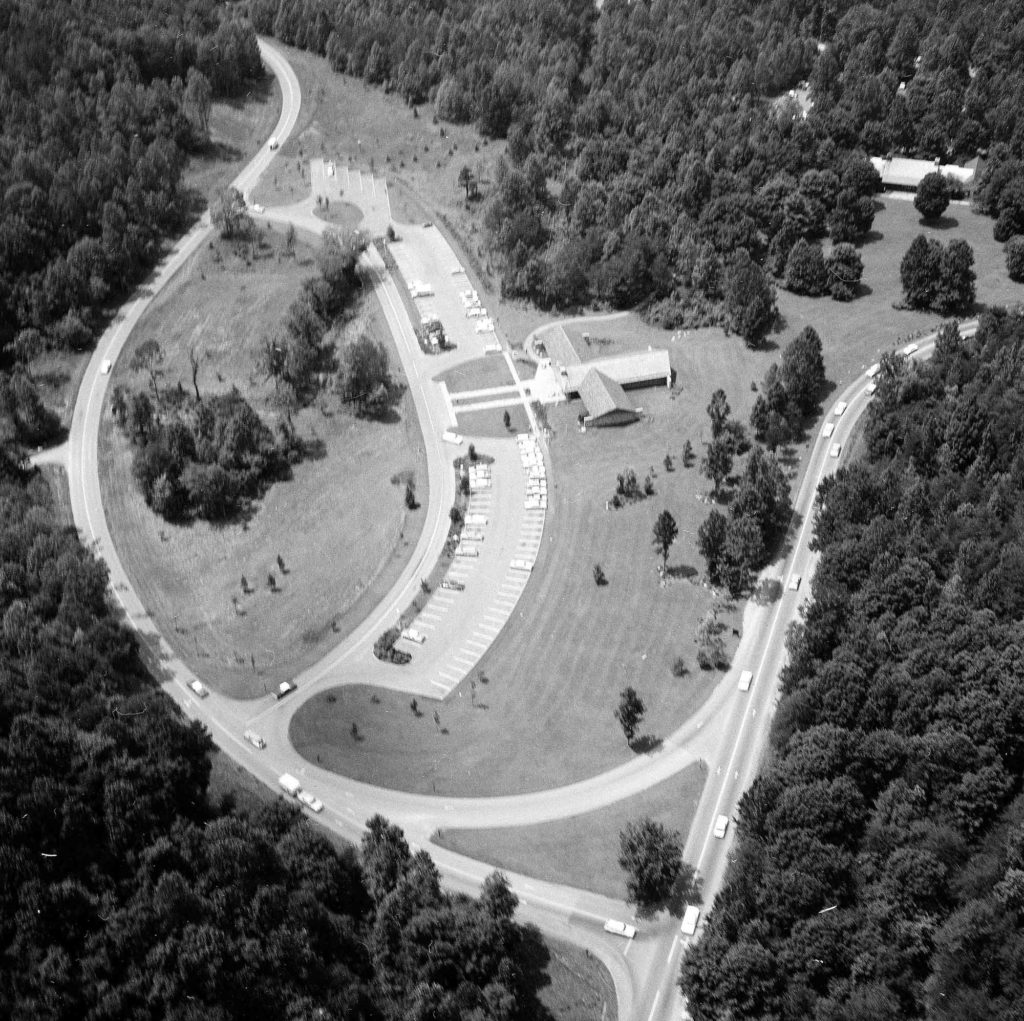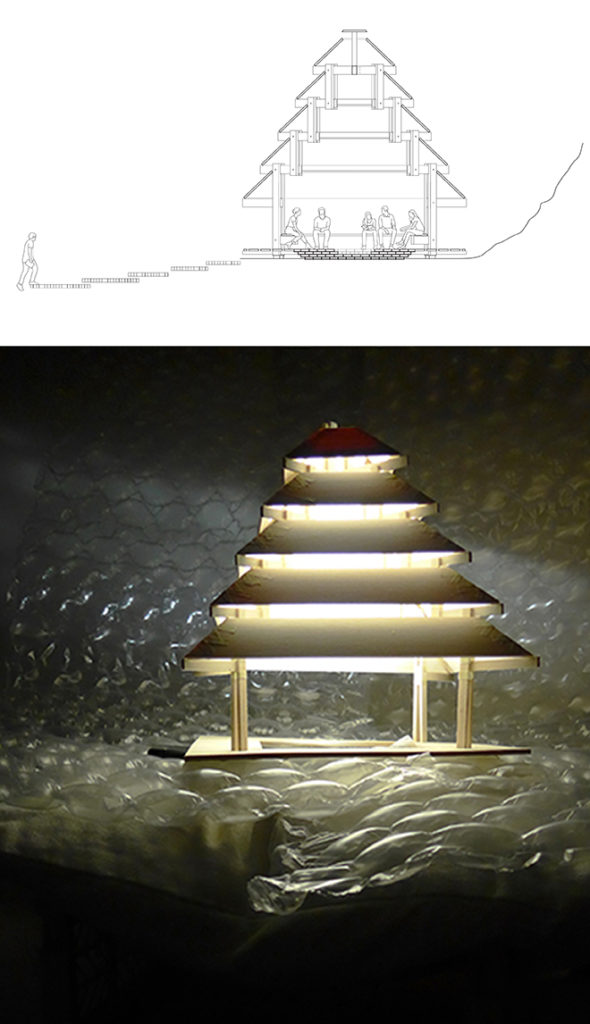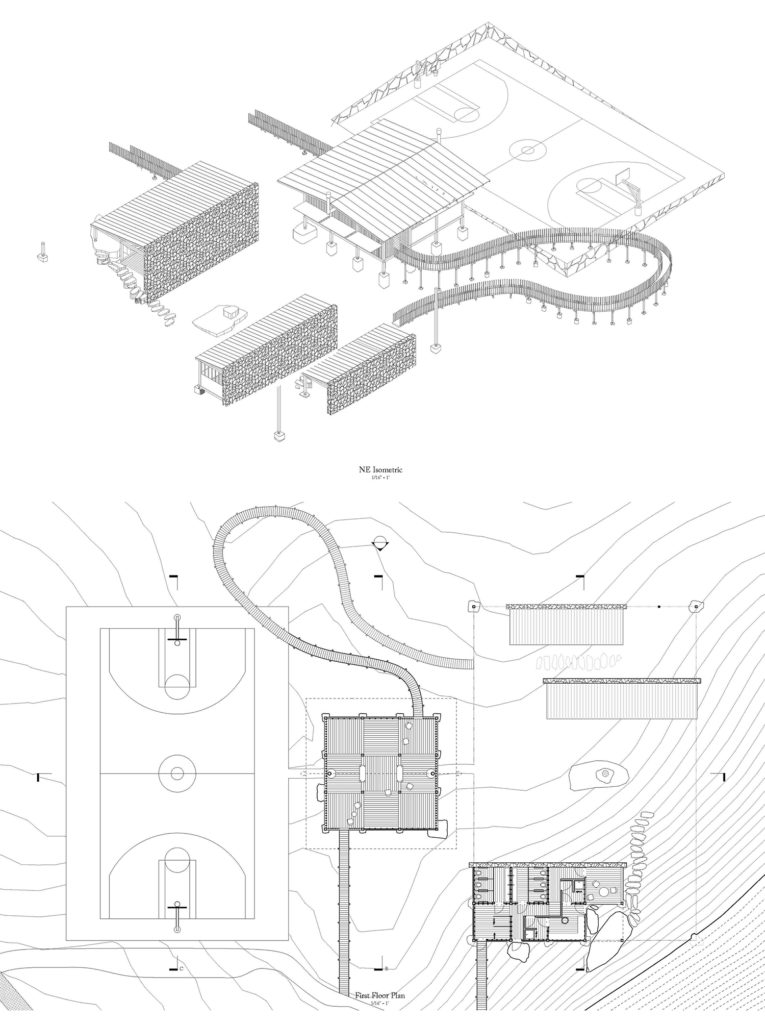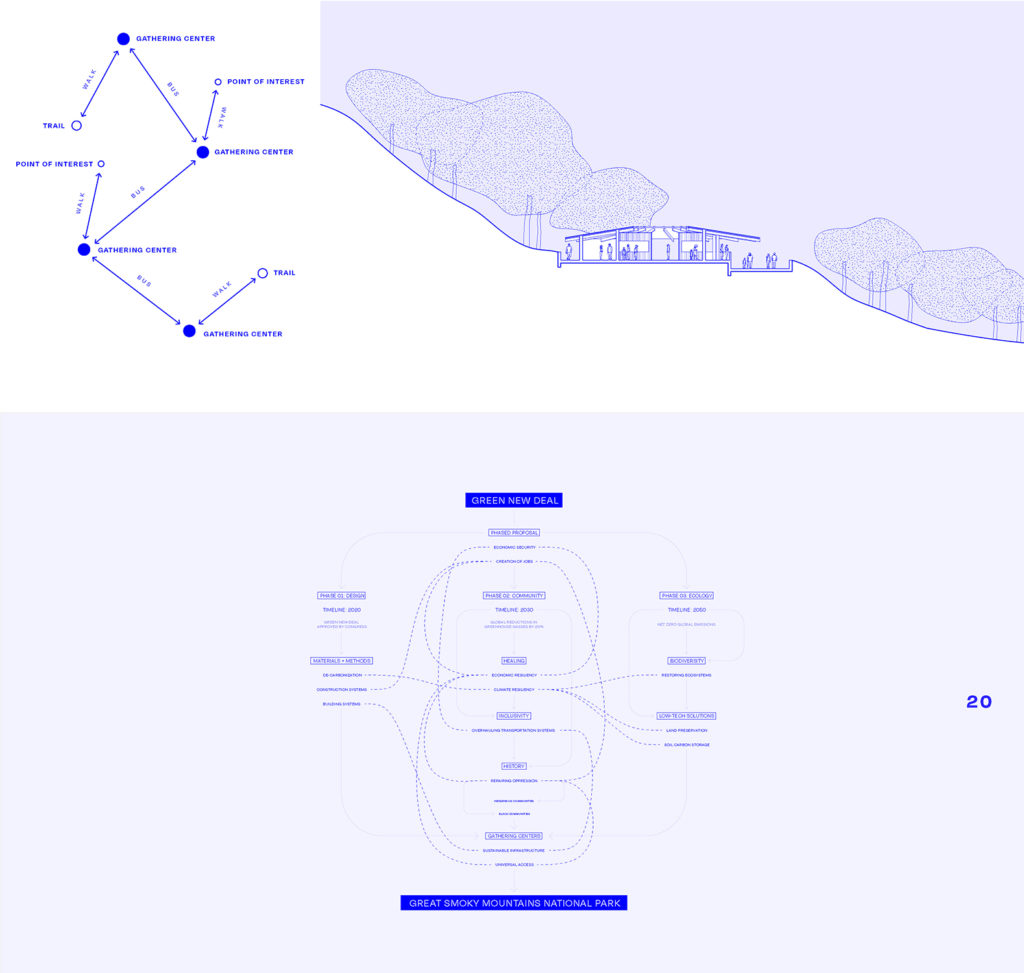Early federal policies that set aside land for the national parks focused mainly on the preservation of objects with “historic or scientific interest.” Protections against incompetent archaeologists and unscrupulous resource speculators encoded in the Antiquities Act of 1906 were essential and powerful safeguards of the public interest. Later legislation expanded these protections and, crucially, provided for the public “enjoyment” of federal lands. With its emphasis on recreation, the founding of the National Park Service in 1916 officially oriented the parks to the people. While they had long been places of contemplation, enjoyment, and solace, Title 16 made the parks a manifestation of the nation’s humanity, and a legacy to be preserved “unimpaired for the enjoyment of future generations.” But in the early 20th century, many of the national parks were remote and difficult to get to, making them accessible only to the ruggedly independent. This has changed, of course. The National Parks recorded 237,064,332 recreational visits in 2020, which entailed more than a billion hours of enjoyment.
By facilitating and framing visitors’ experience of nature, architecture and landscape architecture have played a significant role in the rising popularity of the national parks. The familiar, rustic style of architecture developed for the national parks is one of the most visible legacies of the New Deal of the 1930s. During that era, the National Park Service established high standards for construction of roads and trails, placement of viewpoints, and provision of park amenities. The 120,000 employees of the Civilian Conservation Corps (CCC) provided a workforce to complete the job. Not only did the program offer young unemployed laborers productive work, it did the parks “immeasurable good,” according to then parks director Arno Cammerer. CCC roads, trails, visitor centers, lodges, and picnic shelters greatly improved access to the parks.
While a single building cannot heal racial and climatic crises, architectural processes—construction methods, material ethics, and project phasing—can effect institutional change and promote justice.
on their proposal for a distributed system of gathering centers integrated into the park’s ecological systems for “Can Parkitecture Heal?”
At the same time, the park architecture—based largely on late-19th-century principles of Andrew Jackson Downing, the Olmsteds, and the arts and crafts movement—became widely familiar. The craggy masonry, rugged carpentry, and simple forms seem naturally compatible with the wild settings of the parks. American “parkitecture,” as it is often known, is deeply appealing, almost symbolic of vacationing, adventure, and enjoyment of nature. It also recalls the social contract of the New Deal—park construction helped raise thousands out of poverty after the Great Depression.
However, even as the parks welcome millions of visitors, not everyone feels equally at home in them. As GSD Professor in Practice Jeanne Gang and Instructor Claire Cahan point out in the brief for their Autumn 2020 studio, “Can Parkitecture Heal?,” the legacy of the parks is not all positive: “While these places and their beneficial qualities are intended to be accessible to everyone,” they write, “the parks continue to struggle with inclusivity and their histories of racism, including displacement of Native peoples and segregation.” Rustic park visitor centers and other facilities offer easy, welcoming access to many people; however, for others the close symbolic association of parkitecture with the history of the parks can tie it just as closely to these social ills. A central challenge of the studio, then, was to seek ways to “redefine” parkitecture, Gang explains, and to make park buildings “more accessible, more inviting, more welcoming.”
The studio focused on Great Smoky Mountains National Park, the most frequently visited park in the system. A regular flood of visitors puts immense pressure on the park facilities, and its two aging visitor centers have become inadequate. More critical, Gang emphasizes, is that even though the park is close to some adjacent towns that can bring in more a diverse population, there is not much programming to introduce the park to people who would not normally visit. Park Superintendent Cassius Cash, who met with the students early on, has begun to address this problem. He recently inaugurated Hikes for Healing, a program which brings visitors from local communities to enjoy the park while working with a moderator to discuss persistent social conflicts that deeply affect them—and the nation—in a time of strife: “The Smokies Hikes for Healing (SHFH) initiative is designed to use Great Smoky Mountains National Park as a place of sanctuary… where crucial conversations about race will occur in one of the most diverse ecosystems in the world.”
Gang and Cahan challenged their students to consider this type of cultural programming while designing park facilities. They asked students to think about events that might broaden the park’s appeal, particularly to those who do not generally turn to nature for enjoyment and solace. “The way it is presented in the park, nature is culture,” Gang emphasizes, “so bringing more kinds of culture into the visitor center site” gives people a chance to come in and participate in the storied “healing experience” of nature. Accordingly, the studio’s building program included a new visitor center and a “gathering pavilion” for the SHFH hikes. The studio brief also proposed that these new buildings would share a site with the Sugarlands Visitor Center, which would be remodeled as “an interpretive exhibition hall,” to form a “renewed park village that retains the past and introduces new types of spaces for learning, gathering, and healing.”

The students addressed the gathering pavilion first, developing a range of solutions that included primordial elements of shelter, open air, and fire but that also proposed novel details. In some cases, Cahan explains, “part of this idea of healing and coming together was to physically operate the building.” In other words, the pavilions would function not merely as spaces for gathering, but as mechanisms to bring people together.

In developing proposals for the new visitor center, the students continued to explore architecture’s capacity for healing while extending their concern into other consequential issues. As participants in the national Green New Deal Superstudio, the GSD studio members also considered architecture’s capacity to take on the global challenges that are central to the 2019 Green New Deal legislation: “decarbonization, justice and jobs.” For the “Parkitecture” studio, this was a natural fit.
Acknowledging the lasting manifestations of the New Deal in CCC-built park facilities, they asked themselves how the Green New Deal could similarly advance the role of architecture in causes vital to our own era. In particular, the Superstudio calls for designers to “meaningfully engage in a response to the climate crisis at local, regional, and national levels” by reexamining “their roles in civil society and lead a national conversation about the nation’s future at a critical time in history.” Gang recalls, “One of the students said something really interesting, which was: Those issues are so big, and the studio felt like a way that one could use one’s skills as a designer to address them in a direct way that could make a difference—just a small step. . . .” In addressing these big questions, the students focused on effective programming, small-scale design, and careful detailing.
Each of the six pairs of students emphasized the potentially great consequences of small-scale work. For example, Jack Rodat (MArch ’22) and Nima Shariat Zamanpour (MArch ’22) proposed “distributed interventions” that expand “the narrative of the park by highlighting an observed contradiction”—a classroom in the trees, a composting facility with welcoming signage, a fireplace gathering center, and a basketball court. They write, “Just as the Green New Deal tethers seemingly distinct issues of jobs, justice, and decarbonization together, we believe this multifaceted approach is necessary in the design of the new visitor experience at Sugarlands.”

Stephanie Lloyd (MArch ’22) and Ada Thomas (MLA ’21) proposed a distributed system of gathering centers carefully integrated into the park’s ecological systems. Their construction would use selectively removed trees as the formwork for labor-intensive, low-carbon rammed-earth walls. “While a single building cannot heal racial and climatic crises,” they explain, “architectural processes—construction methods, material ethics, and project phasing—can effect institutional change and promote justice.”

Just as “America’s best idea” began with the preservation of artifacts, a new approach to big societal issues through design must begin with small-scale efforts. As ambitious as the Green New Deal Superstudio is, the participants in the GSD’s “Parkitecture” studio found that if architecture is going to contribute to healing it must do so at a human scale.